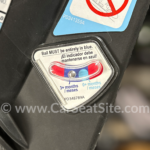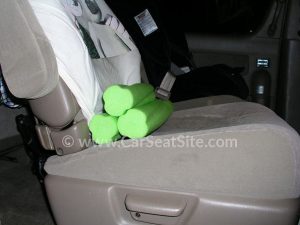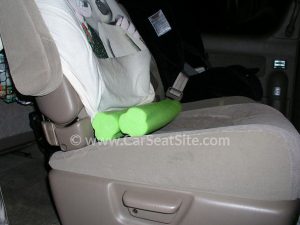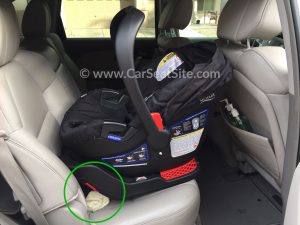How to Recline Your Rear-Facing Only Infant Seat or Convertible Carseat
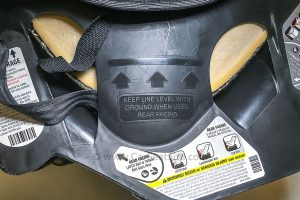 Getting the correct recline on a newborn’s carseat is one of a parent’s biggest concerns and for good reason. All rear-facing carseats today have recline angle indicators on them, whether in the form of a bubble indicator, a line on a sticker or stamped into the plastic on the side, or a color dial on the seat. But how do you install your carseat so that the recline falls within the zone the angle indicator suggests for your child?
Getting the correct recline on a newborn’s carseat is one of a parent’s biggest concerns and for good reason. All rear-facing carseats today have recline angle indicators on them, whether in the form of a bubble indicator, a line on a sticker or stamped into the plastic on the side, or a color dial on the seat. But how do you install your carseat so that the recline falls within the zone the angle indicator suggests for your child?
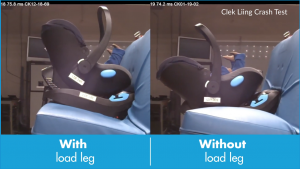 Carseat manufacturers recommend particular angles because that is how they crash test the seats. Rear-facing carseats are not allowed to rotate down past 70° from upright during testing; each model of carseat has a different degree of rotation depending on its design and the weight of the child using it. Over-rotation towards the floor of the car places too much force on the child’s shoulders, neck, spine, and head. And since most parents and caregivers leave the harness too loose, there’s also potential for the child’s head to come out of the carseat and strike the interior of the vehicle.
Carseat manufacturers recommend particular angles because that is how they crash test the seats. Rear-facing carseats are not allowed to rotate down past 70° from upright during testing; each model of carseat has a different degree of rotation depending on its design and the weight of the child using it. Over-rotation towards the floor of the car places too much force on the child’s shoulders, neck, spine, and head. And since most parents and caregivers leave the harness too loose, there’s also potential for the child’s head to come out of the carseat and strike the interior of the vehicle.
Your carseat instruction manual will guide you through installation and will tell you how to recline your carseat. If you have misplaced your instruction manual, look for labels on the base or the carseat itself, then visit the manufacturer’s website to find the online manual. If you need help with installation, you can find some tips here.
A newborn requires closer to a semi-reclined position to keep their airway open and their chin off their chest. Newborns and young babies have little neck control and their heads will flop off to the side very easily when they sleep; this is natural and does not hurt them at all. When the baby’s chin falls straight down to their chest, their airway will be cut off and they do not have the ability until they’re older to move their head to breathe (that’s why we give them plenty of muscle-building practice with parent-monitored tummy time). We keep their airway physically open with the angle of the carseat.
If your carseat has a recline range with some play to it and you are expecting a newborn, recline the seat to the maximum recline allowed in the range. Most seats with dial or bubble indicators have a recline range that can be finely adjusted.
Some recline indicators have dual ranges, such as those pictured below. The first picture requires infants weighing between 4-20 lbs. to have the indicator line hover on the blue section, while the indicator line must hover over the green section for children weighing 20-35 lbs.
The second picture is slightly different. Newborns must have the silver ball in the light blue circle, but older children can also use that recline. After they reach 3 months of age, they can be more upright so that the ball is in the darker blue zone.
The older the child, the more upright the carseat can be as long as the child is comfortable and the recline angle falls within manufacturer guidelines. If your carseat’s recommended recline is too upright for your newborn, contact the manufacturer for further instructions. You may need to purchase a different carseat. You can also consult a certified child passenger safety technician for more help.
Tips for Reclining a Rear-Facing Seat
- Read the instruction manual for your carseat and vehicle. All rear-facing only infant seats have angle indicators that show angles appropriate for those seats. If your baby needs more recline, you may need to adjust the installation so that it is more reclined, yet still falls within manufacturer guidelines, or use a different carseat. Graco infant seats are infamous for having a wide recline range. Evenflo infant seats require 1.5″ of space between a rear-facing carseat and the front seats. Most vehicles with advanced airbags do not allow a carseat to touch a front passenger seat because the carseat may interfere with the deployment of the airbag. The only way you will know that is if you read the instruction manual.
- Use the carseat’s recline feature before trying to install the seat.
- If you cannot find the recline feature on your infant seat base or convertible seat, remember that manufacturers color code user touchpoints for ease-of-use. For instance, Chicco uses the color orange on parts it wants caregivers to use. Graco and Britax use red or gray for their touchpoints.
- The base of the carseat should be level with the ground (park on a flat surface). Your carseat’s level indicator will give you a false reading if the base is not level.
- Noodles or a tightly rolled towel placed in the vehicle seat bight (crack) can help you achieve the proper angle for your carseat if the built-in foot is not giving you enough of an angle. Use as many as you need, but there are a few exceptions:
- Chicco does not allow the use of noodles or towels with their rear-facing carseats
- Diono does not allow the use of noodles or towels with their rear-facing convertible carseats
- Clek allows the use of a tightly rolled towel, but not noodles
- Noodles/rolled towels are used only with rear-facing carseats; however, certain Evenflo and Graco forward-facing carseats allow their use to improve fit to vehicle. Use noodles/towels in this manner only if allowed by the carseat manual.
Here’s a video showing how to use noodles and rolled towels. I go over how long to make the noodles, where to place them, how many you may need, and show installation of a rear-facing only infant carseat base with a noodle and a convertible carseat with a rolled towel.
Examples of noodle and towel placement in the bight of the vehicle seat:




